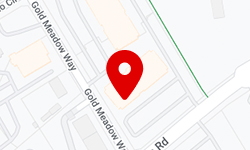- Free Consultation: 916 459 2364 Tap to Call
How the bankruptcy process works
The bankruptcy process can seem intimidating to those who are unfamiliar with the process. Often thought of as the consequence of poor money management and irresponsibility, the bankruptcy process is actually intended to benefit citizens. The rules of bankruptcy were developed to help those suffering undue financial hardship regain a fresh start. The first step towards any big decision is to get informed. Learning more about the steps of bankruptcy can prepare you to make an educated decision regarding your path to debt relief.
The steps of bankruptcy are as follows:
1. The debtor files a petition with the bankruptcy court. The petition is a detailed document that outlines your financials in details. The petition will ask you to list all of your debt accounts, income, earnings, assets, and personal property. The petition is used by the court to evaluate your eligibility as you formulate a plan of action.
2. The debtor lists all of his or her assets and liabilities. The petition information includes high levels of detail regarding all of your personal property and items of value. This is anything from fund accounts, to household goods, items used for work or recreation, and big items like your vehicle and home. Your debt liabilities are listed to summarize your outstanding balances, which includes your interest charges and any penalty fees.
3. The debtor discloses any recent financial transactions. It is important to limit large, unnecessary or unusual financial transactions around a bankruptcy filing. The court will want to see where you are spending your money and for what purpose. Spending too much before a filing may disqualify you from eligibility or be viewed as fraudulent activity. It is important to be open and honest during your bankruptcy proceeding.
4. The debtor proposes a plan of liquidation and/or reorganization to the creditors. To reorganize your debts you need to propose a plan of repayment in a Chapter 13 bankruptcy. The repayment plan is based on the financial liabilities compared to assets and income in the petition. These details are used to develop a monthly payment that will satisfy the remaining debts at an agreed upon amount that you should be able to afford.
5. The bankruptcy court holds a hearing on the debtor’s petition. At the hearing, creditors have an opportunity to raise questions or concerns. The court will decide whether to approve the repayment plan in Chapter 13 or liquidation in Chapter 7.
6. The bankruptcy court enters an order approving or denying the debtor’s requested discharge of debts. If your debts are successfully resolved, any remaining amounts are no longer collectable and the creditor is unable to collect in the future. In other words, you are no longer liable for the debt.
If you have questions about bankruptcy, contact a Citrus Heights bankruptcy attorney. We can answer your questions and help you make an educated decision about your debt relief plan.











